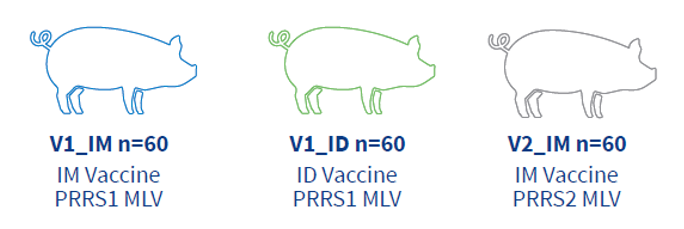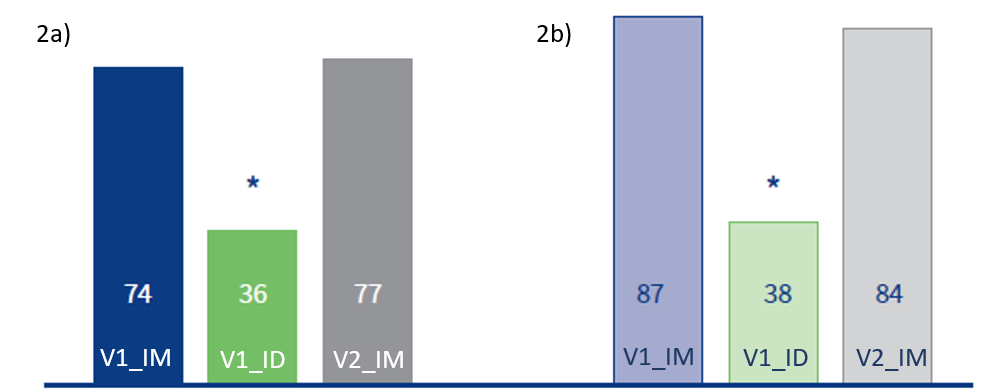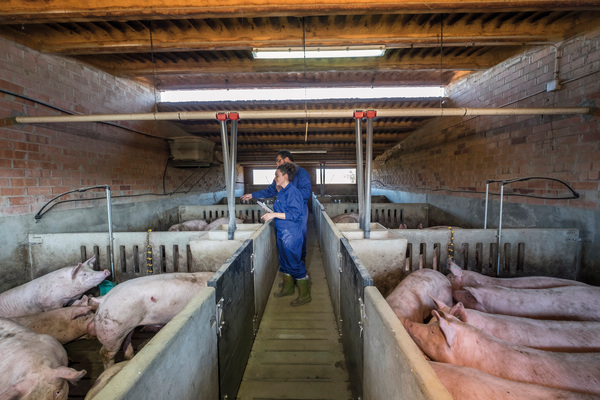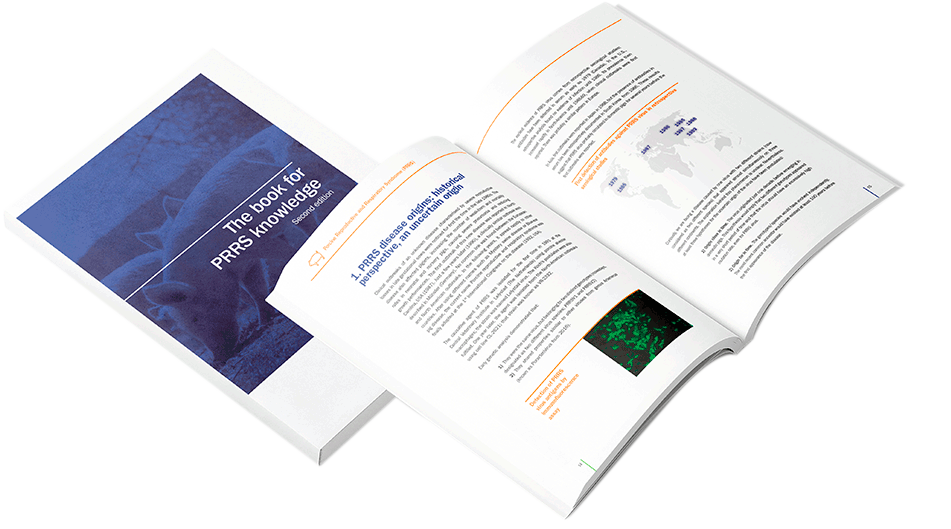Enhanced productivity and antibiotic reduction in pigs vaccinated intradermally with a PRRSV1 MLV on a Japanese PRRSV2-positive farm
Publication of Joel Miranda et al. in the IPVS 2024.
Introduction
Vaccines can reduce the clinical outcome and productive impact of Porcine Reproductive and Respiratory Syndrome Virus (PRRSV)1,2, with two routes of administration available: intramuscular (IM) and intradermal (ID). Our goal was to evaluate the efficacy of two commercial PRRS MLV vaccines – one based on PRRSV1 (UNISTRAIN® PRRS, HIPRA; IM and ID), and another on PRRSV2 (strain VR-2332; IM) – in growing pigs on a Japanese PRRSV2-positive farm.
Material and methods
At 3 weeks of age, 180 Kurobuta piglets were evenly distributed into three groups and vaccinated either with a PRRSV1 MLV or a PRRSV2 MLV (figure 1):
- group V1_IM: vaccinated with UNISTRAIN® PRRS (intramuscular)
- group V1_ID: vaccinated with UNISTRAIN® PRRS (intradermal)
- group V2_IM: vaccinated with strain VR-2332 (intramuscular)
The presence of PRRSV in blood (RT-PCR) and humoral response (CIVTEST® SUIS PRRS E/S and A/S) were assessed monthly in all animals. Between vaccination (3 weeks of age) and slaughter (6 months old), was performed an assessment of PRRS-compatible clinical signs, use of antibiotics and average daily weight gain. Furthermore, in deceased animals the presence of PRRSV in tissues was checked (RT-PCR). Statistics were performed using StatsDirect v2.7.7

Figure 1 – Experimental groups. From Miranda et al, 2024.
Results
No vaccine strains were found in blood after one month; however, the PRRSV2MLV strain was found in the lungs from a dead animal (47 dpv) belonging to V2_IM.
After 14 dpv, the V1_ID group showed significantly fewer days with clinical signs than V1_IM and V2_IM (36 < 74 and 77, respectively; p<0.05) (figure 2a). The cumulative number of days with individual antibiotic injections was lowest in the V1_ID group (38 days for V1_ID < 87 days for V1_IM and 84 days for V2_IM; p<0.05) (figure 2b).

Figure 2 – Number of days with PRRSV compatible clinical signs (2a) and number of days where antibiotic treatment was applied (2b). Adapted from Miranda et al, 2024.
During the first month postvaccination, the V1_ID group showed a significantly higher daily weight gain than V1_IM and V2_IM (286.0 > 235.0 and 234.7 g/d, respectively; p<0.05) (table 1). PRRSV2 antibodies were detected in all groups, indicating the circulation of PRRSV2 field strains.

Table 1 – Average daily weight gain (ADWG): group V1_ID had a significantly higher growth during the first month after vaccination. † woa – weeks of age. Adapted from Miranda et al, 2024.
Discussion and conclusion
Despite the genetic differences, IM PRRSV1_MLV and PRRSV2_MLV provided similar protection on a PRRSV2_positive farm. Conversely, a better outcome was achieved using ID PRRSV1_MLV. suggesting that ID vaccination is an effective strategy for PRRS control. Additional advantages of using the ID route are avoiding iatrogenic transmission of pathogens and less stress and pain3.
Apart from the route of administration, these findings might be explained by the immunological properties of the strains involved4 and by the interference with maternally derived antibodies at vaccination5, since sows were routinely vaccinated with the PRRSV2 vaccine.
If you want to read more publications about PRRS: PRRS Control Publications
References




